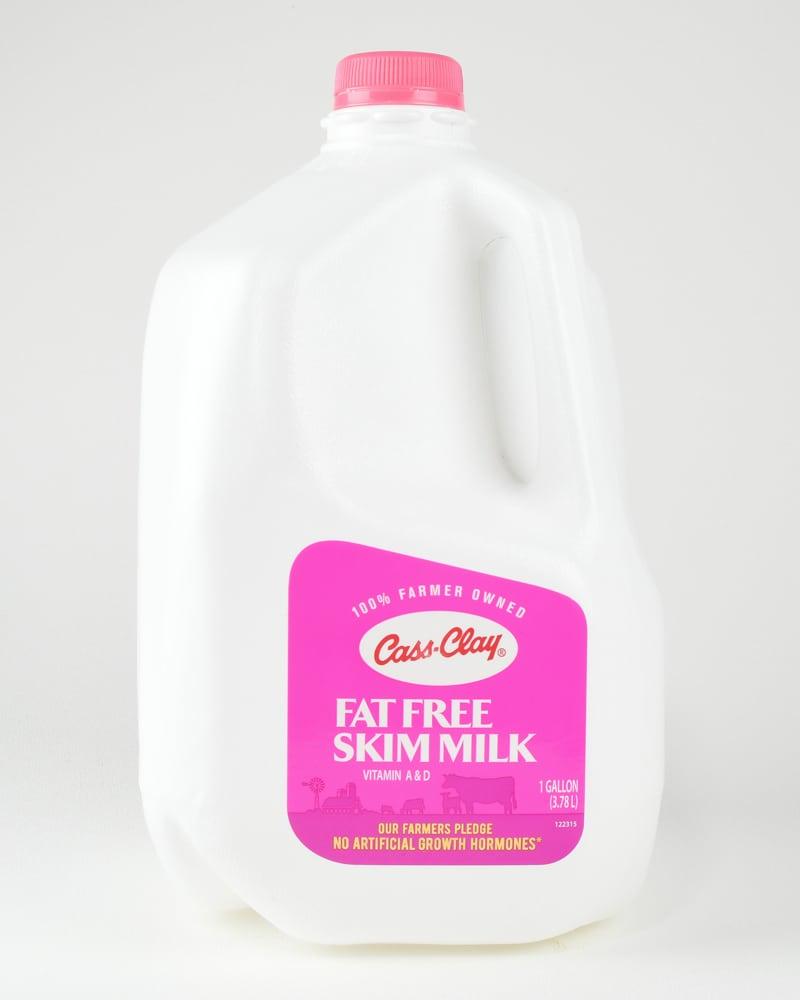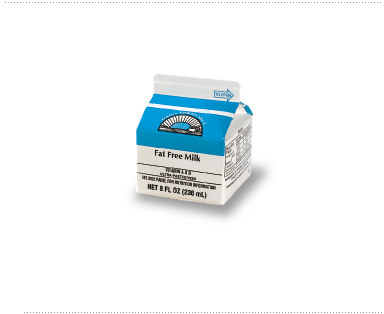

If your cholesterol is high or you are trying to lose weight, it might be worth the swap to reduced fat products.
#CARBS IN SKIM MILK 1 CUP FULL#
The consensus? If you are happy with your weight and your cholesterol is fine, full cream milk is no problem. Although some fat assists the absorption of fat-soluble nutrients such as A, D, E and K and can make us feel more satisfied, drinking large amounts of full cream milk may add to your waist line. There are 167 calories in Skim Milk coming from 38 protein, 59 carbs, 3 fat, and 0. The amount of protein for a variety of types and serving sizes of Skim Milk is shown below. A donut chart showing which nutrients contribute to the caloric total. Hardly worth the worry! However, there are more calories in full cream milk due tot the fat: 1 cup has 665kJ compared to 368kJ in skim milk. The favorite choice for the term 'Skim Milk' is 1 cup of Milk (Nonfat) which has about 8 grams of protein. Oat milk nutrition facts for 1 cup include 120 calories, 5g of fat. Calories in Skim Milk Powder based on the calories, fat, protein, carbs and other nutrition information submitted for Skim Milk Powder. Component per 100mLĪs you can see, there is 4.8g of sugar in 100ml of full cream milk compared to 4.9g in 100ml of skim. To make skim milk, producers use a centrifugal separator to remove the fat globules. Below is a comparison of Dairy Farmers full cream milk and skim milk products per 100ml.


It is a natural, low glycaemic index sugar, called lactose. It is also important to remember the ‘sugar’ in milk is not ‘added’ sugar. Although 1-percent milk has a slightly higher fat content, you wont be consuming a large amount of extra sugar with each serving. But there’s a catch: You may feel like you need to drink more skim milk to. Low-fat milk is ideal for weight loss because it contains fewer calories. A glass of fat-free or skim milk contains roughly 90 calories and nearly no fat per 8 ounce serving. There will be slightly more carbohydrate, protein, sugar and calcium. A glass of whole milk is roughly 150 calories and contains 4 grams of fat per 8 ounce serving. Calorie breakdown: 3 fat, 56 carbs, 41 protein. When you remove the fat, it means that the other components of the milk will be higher in content. There are 137 calories in 1 cup of Plain Yogurt (Skim Milk). While it’s true, the extra sugar is minimal. The same serving of almond milk meets 45 percent of the daily value for calcium and 25 percent of the daily value for vitamin D.One of the most common reasons dietitians find people ditch skim milk for full cream milk is that they have heard that skim milk contains more sugar. It is also low in carbs but has a silky, creamy texture, which many. When looking for a milk alternative such as almond milk, it's important to find substitutes fortified with these nutrients.Ī 1-cup serving of skim milk meets 32 percent of the daily value for calcium and 30 percent of the daily value for vitamin D. Just like almond milk, cashew milk is very low in calories per one-cup serving.

Nutrition for Your Bonesĭairy foods are an important source of calcium and vitamin D, which you need for healthy bones. Skim milk is fat-free, while the amount of fat in a cup of almond milk ranges from 2 grams to 3 grams. The favorite choice for the term 'Skim Milk' is 1 cup of Milk (Nonfat) which has about 12 grams of carbohydrate. A 1-cup serving of skim milk contains 8 grams of carbs, while the amount in a cup of almond milk ranges from less than 1 gram to 22 grams. The amount of carbs in skim milk does not vary, but it does in almond milk depending on the manufacturer and flavor. Oat milk: Oat milk comes from rolled oats and water. One cup contains 166 grams of net carbs ( ). A 1-cup serving of the nonfat cow's milk contains 9 grams of protein, while the same serving of unsweetened original almond milk has only 1 gram. Condensed milk: Used in baking cookies and desserts, condensed milk is certainly not keto-friendly. One-percent milk has 305 milligrams and skim milk has 299 milligrams of calcium in a 1-cup serving. Both types have about the same amount of calcium. This difference is entirely due to the extra calories that come with the higher fat content in 1-percent milk. If you're trying to get more protein in your diet, you might want to stick with skim milk. One cup of skim milk has 83 calories, while 1-percent milk has 102 calories. As with other reduced fat milks, 1 has less fat, calories and vitamin A than whole milk, but has similar amounts of other nutrients including protein and.


 0 kommentar(er)
0 kommentar(er)
